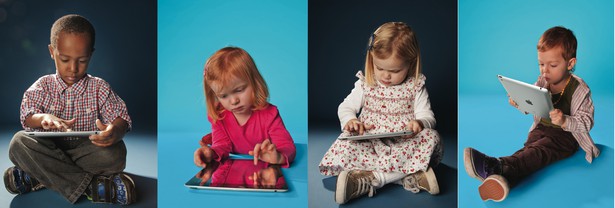Este artículo de Hanna Rosin está lleno de ideas, citas y estudios relevantes para responder la primera gran pregunta de esta década: ¿está el iPad alterando significativamente la forma como los niños aprenden, se entretienen y se educan?
Previously, young children had to be shown by their parents how to use a mouse or a remote, and the connection between what they were doing with their hand and what was happening on the screen took some time to grasp. But with the iPad, the connection is obvious, even to toddlers. Touch technology follows the same logic as shaking a rattle or knocking down a pile of blocks: the child swipes, and something immediately happens. A “rattle on steroids,” is what Buckleitner calls it. “All of a sudden a finger could move a bus or smush an insect or turn into a big wet gloopy paintbrush.” To a toddler, this is less magic than intuition. At a very young age, children become capable of what the psychologist Jerome Bruner called “enactive representation”; they classify objects in the world not by using words or symbols but by making gestures—say, holding an imaginary cup to their lips to signify that they want a drink. Their hands are a natural extension of their thoughts.
¿Qué pasa cuando ya no tienes que enseñarle a un niño cómo usar un dispositivo? ¿Qué pasa cuando la mayoría crece sin distinguir un computador de cualquier otro juguete? Un sonajero en esteroides, como pone la cita.
